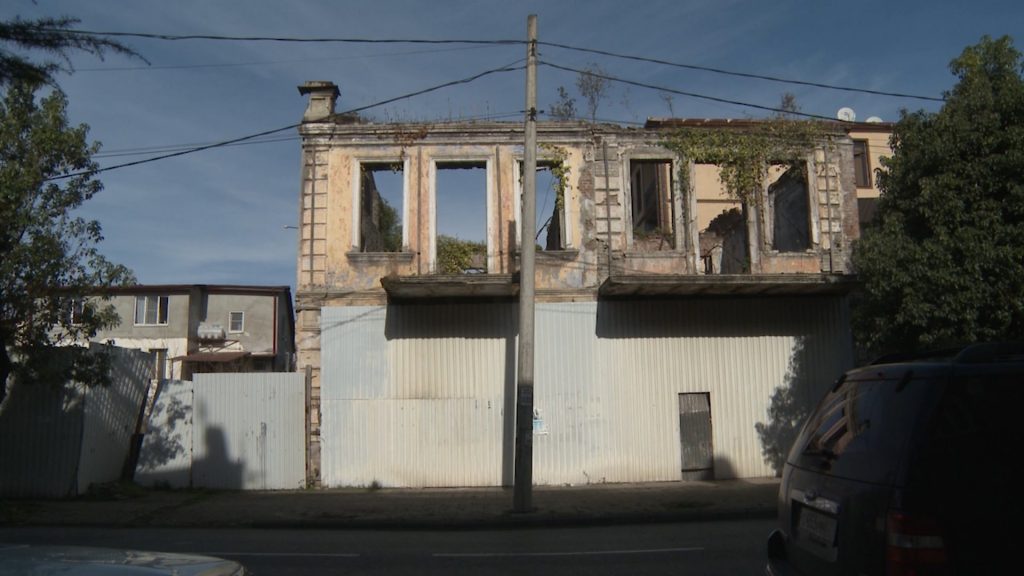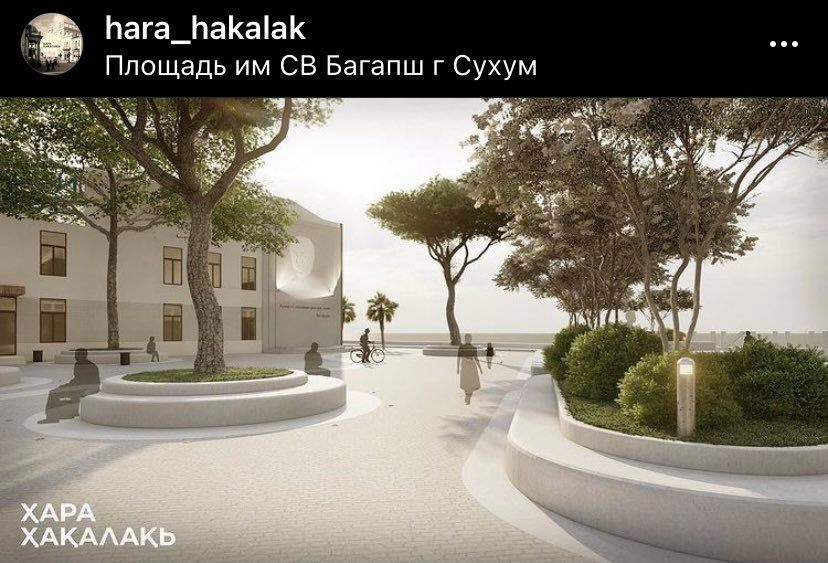Activists in Abkhazia: "We have completely lost our city"
‘Khara Khakalak’ [Abkh. Our city] is a group of architects, designers, artists, engineers, urbanists and journalists, who say they are not indifferent to the fate of Sukhum and want to use their knowledge for its benefit. How can young specialists help the city and what exactly do they propose to change?
In the beginning there was the (protest) word
The history of Khara Khakalak began with a civil protest – in the summer of 2019, in the center of Sukhum, in the area of the famous Brekhalovka coffee shop, the construction of a local building was deemed ‘not very aesthetic.’

Then this construction site was criticized by the townspeople, and the current activists of Khara Khakalak even went to a protest action demanding to remove this building.
The young specialists managed to convey that this type of structure was not appropriate, and it was dismantled by the city authorities.
Op-Ed: Abkhazia needs Russian money, but it might come at a high cost
Tkuarchal, Abkhazia – a former coal capital trying to survive
Then the young people decided not to disperse and organize a group. To begin with, they created the Khara Khakalak pages on social media. Their ideas, sketches and proposals are published there. Among them is the creation of a barrier-free environment on pedestrian areas, which has already been partially implemented on the Makhadzhirov embankment.
Also, activists have created a column “My Facade”, where they publish the real existing facades of architectural monuments and their proposals to improve their appearance.
“We have completely lost our city”

“For example, there are dozens of historic buildings on Confederate Street, some of which are even listed in the register. If you look at archival photographs, you can see the original facades. Over the years, as we ourselves know, these houses not only passed from hand to hand as property, but were also populated by many different people. Everyone arranged the convenience there for themselves.
Today we have the opportunity to really return to the historical look. Not just because we want it this way, but because it is already impossible to go on like this. We have completely lost our city behind these hanging wires, behind this annoying inappropriate advertisement,” says one of the activists, civil engineer Astamur Maan.
Experts say that making a bad facade costs as much as a good one. And, therefore, there can be no financial justification for such architectural errors. Activists are ready to help the townspeople – to advise, share knowledge and waste time. They will not be able to make full-fledged projects with plans, drawings and materials for everyone – such work costs money, but you can get advice, perhaps even a sketch, from Khara Khakalak for free.
Activists also offer larger-scale ideas than in the “My facade” section. For example, they are preparing their projects for the reconstruction of Brekhalovka and one of the central squares of the city. The second – within the framework of an open competition. It is not a fact that their works will be taken as a basis, but at least specialists will have their say.

Speak and you will be heard
Activists are fighting not only for the aesthetics of buildings. Recently, the Ministry of Tourism held a competition for the best logo for the tourism brand of Abkhazia. The winning work drew a flurry of criticism both in civil society and in the professional. Members of Hara Hakalak expressed their position publicly. The organization emphasized the wrong approach to the implementation of a good idea – to create a tourism brand for the country.

“The approach to creating the logo of our country is wrong. This is a large-scale work, this is a study that needs to be approached very subtly and competently. You cannot leave the development of such things to amateurs. Our and other people’s indignation was caused precisely by this. Everyone saw the result, which did not meet the request,” says architect Kama Katsia, a member of Khara Khakalak.
And the voice of the professional community, namely activists from a public organization, was heard – representatives of the group were invited to a meeting at the Ministry of Tourism and, following the dialogue, officials decided to change the logo. Now it will be a collective work of several graphic designers at once.
Sprucing up the bazaar
Members of Khara Khakalak are from 25 to 45 years old – they all received educations abroad and everyone has something to write in their resume and show in their portfolio. Each of the specialists of Khara Khakalak dreams about what Sukhum could be like.

Remove the wires and advertisements here, straighten the pillar that the car crashed into two years ago, lay the sidewalk here, and change the tiles there. Architects also take on more grandiose things. For example, the architect Georgi Agrba, during his graduation work, developed a project for the reconstruction of the Sukhumi market.
“After analyzing all the problems that exist on the territory, from the point of view of ecology, from the point of view of urban planning, infrastructure and throwing away all the factors that are tied to us today, that is, private property and so on, I imagined what could be done in this territory. This project is, of course, very large-scale, it cannot be implemented so immediately. But some individual thoughts can be borrowed from there and, perhaps, even right now, put into practice,” says Georgi Agrba, architect.

City of the future with mistakes of the past
On social media, activists often receive messages from residents of other cities with a request to pay attention to the regions. At the same time, Khara Khakalak is planning to work consistently in the capital for the time being and not to get hung up on the center of Sukhum, to reach the outskirts.
We can say that young people in general dream of creating a modern, beautiful and comfortable tourist city, including promoting the international trend to limit car traffic and create more pedestrian zones.
“We need to strive to gradually free the city from cars. Cars are evil for the city. We must attract tourists, we must make facades that are in contact with the street space. Walking is the health of our nation. We must develop bicycle infrastructure and public transport. And no cars. That is, cars are not for the historical part of the city. We will come to this, because the entire civilized world follows this path. We should be equal to them, and this is our future, ”says architect Bislan Bagatelia.
Members of Khara Khakalak note that due to the blockade and the post-war crisis (after the Georgian-Abkhaz war of 1992-1993), it was possible to relatively preserve the historical appearance of Sukhum. There is not a lot of new development or an abundance of “catastrophic” projects from the point of view of urban architecture that cannot be corrected.
It is important to use this time to create a town planning code or design code, which will spell out the requirements for the appearance of facades, preferred colors, materials and advertising standards.
“None of us have claims against ordinary citizens, owners of buildings. And not because we try to be delicate, not to enter into conflicts, but because we really sincerely believe so. There were no rules, there was no clear regulation. And most often people tried to the best of their financial capabilities and aesthetic ideas. But it’s time to clarify.
Of course, this is not a function of our team, but of the city administration, but the rules must be clearly spelled out, and then it will be easier for people to navigate in this whole situation,” says artist Madina Biguaa.
Today Sukhum lives without a master plan and regulatory framework. And these are the most important tools that regulate the spontaneous development of the area. The master plan should be responsible for the optimal development of the territory, taking into account all factors – from climatic to architectural. The need to create this basic document has been discussed for many years, but the matter does not go further.
Young people are ready to work, offer their ideas, improve facades, participate in the creation of the design code and the master plan of the city. In the meantime, they are guarding the city’s interests from the point of view of preserving the historical and cultural heritage, the aesthetics of place and time.
Toponyms, terminology, views and opinions expressed by the author are theirs alone and do not necessarily reflect the views and opinions of JAMnews or any employees thereof. JAMnews reserves the right to delete comments it considers to be offensive, inflammatory, threatening or otherwise unacceptable


















